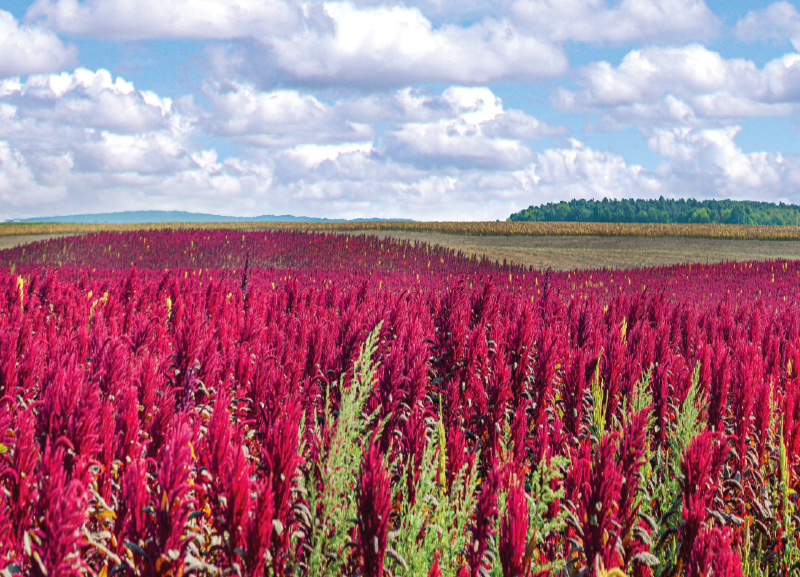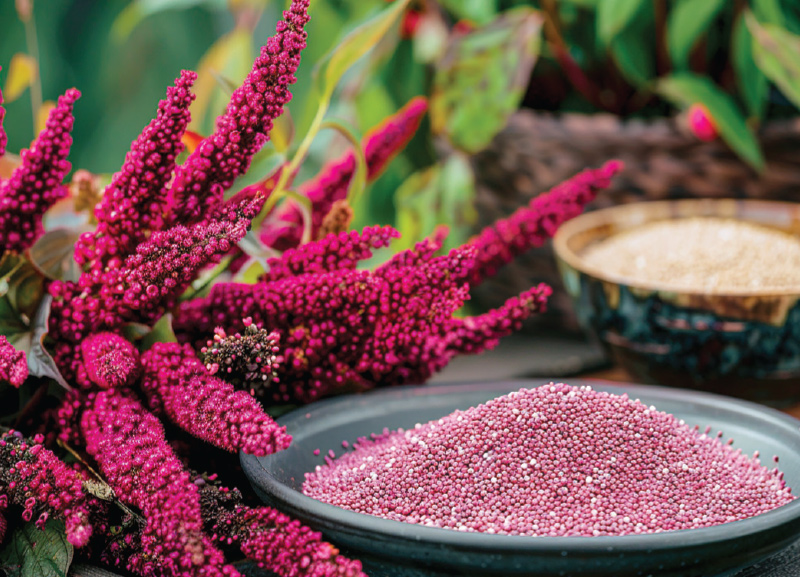

Amaranth, also called rajgira, is often grouped under the category of ancient grains, though technically, it is a pseudocereal, which means it is a seed from a non-grass plant that is used like a cereal grain.

Amaranth
Amaranth, also called rajgira, is often grouped under the category of ancient grains, though technically, it is a pseudocereal, which means it is a seed from a non-grass plant that is used like a cereal grain. The amaranth plant is used for its leafy greens, also known as lal math or chaulai, and for its seeds, which are dried and puffed before use.
History:
Amaranth is native to Central and South America. It was considered sacred and used in rituals. It was also eaten as a staple food by ancient civilisations like the Aztecs and Incas. It has now been rediscovered as a superfood.
Amaranth Cultivation in India:

Culinary Uses:
Regional Specialties:
INTERESTING FACT
Amaranth seeds are so small that a single plant can produce thousands of seeds.

LAL MATH SAAG

INGREDIENTS
METHOD
Warning: Ask a parent or adult to help with this recipe.
List 5 facts about amaranth.







